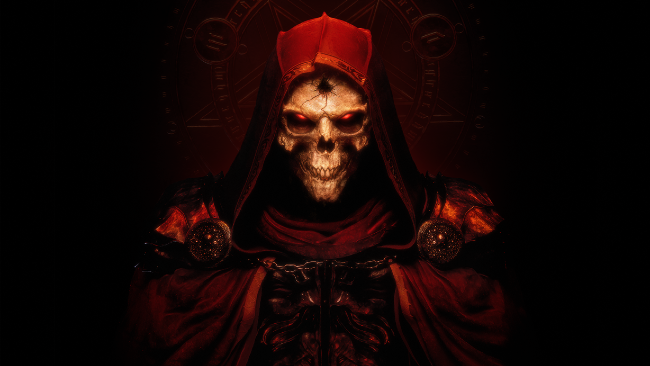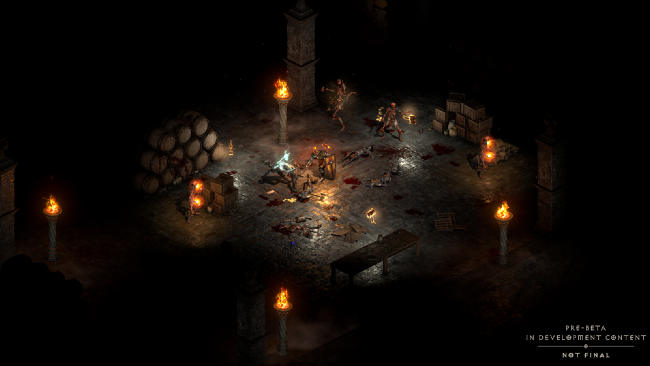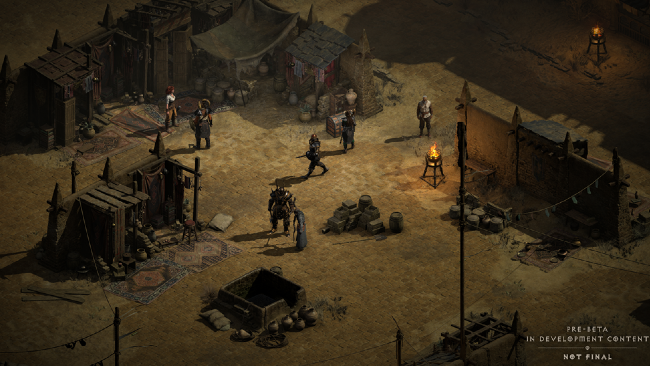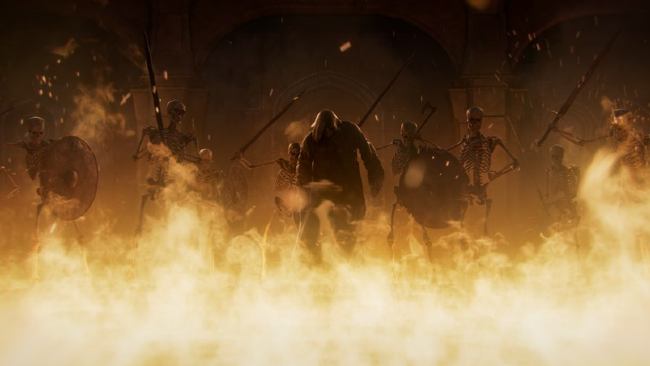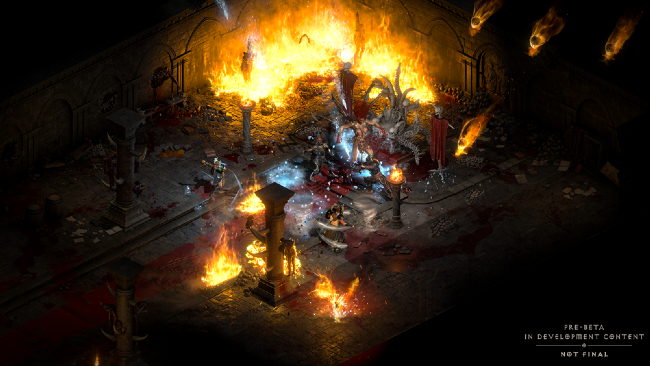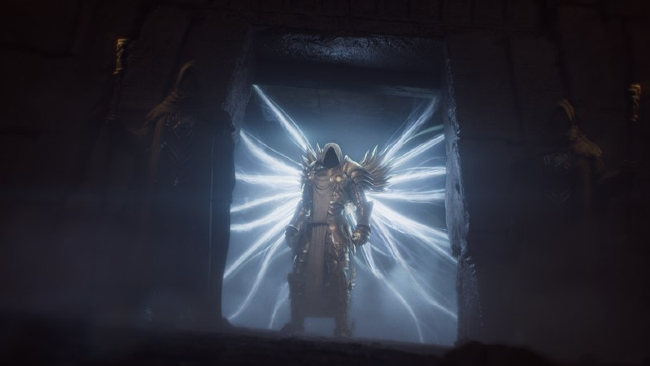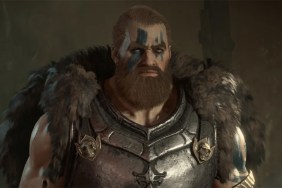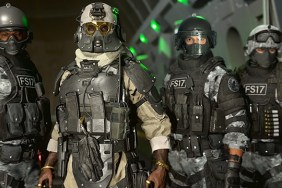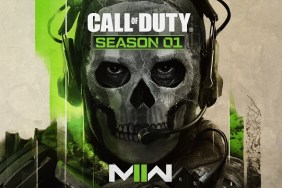Remakes, remasters, and reimaginings are not at all uncommon in video games, but not all of them are created equal. With each and every one, there is a balance that must be met, debate over what to modernize, what to keep, and how to best bring the game into the current gaming environment while respecting the game that came before. For the team at Vicarious Visions and Blizzard working on Diablo II Resurrected, authenticity to the original Diablo II experience was key. Any modernization could not come at the expense of the game that was, and that meant some tough choices throughout development.
We got the opportunity to speak with a few members of the development team on Diablo II Resurrected, and the core message behind every part of the discussion was centered on that tenuous balance. Even the seemingly simple act of updating the visuals created numerous issues that the team had to work through in order to carve out a game that looked updated, but retained that classic feel frame-for-frame.
In an initial roundtable, we sat with Studio Design Director Rob Gallerani and Project Lead Michael Bukowski. Gallerani spoke of being “humbled” by the opportunity to work on such a beloved game. He notes that there are some fans still playing the original game two decades after its original release, and as a formative title even more many at the studio, it was an honor to get to work on the Resurrected project. “I want to work on games that matter,” Bukowski added.
Gallerani pulled focus to the two groups of people that the development team had to be mindful of. “The first thing we had to do was, we are preserving this game,” Gallerani said. Diablo II Resurrected is about bringing classic Diablo II to the modern era, not about changing the classic game into Diablo III’s systems or fundamentally changing it in any way. “We are not iterating on the franchise. This is not [Diablo 4]. This is what [Diablo II] was.”
That set the core foundation of development. “We have to keep the core of the game the same, but we want to get more people on board with what the game is,” Gallerani said. This tenet allowed them to make quality of life changes, like modernizing how friends lists work, without actually changing what the game is. Diablo II Resurrected is still going to be a hard experience. They are creating a fresh new tutorial section or changing the ramp at all. For all intents and purposes, this is still Diablo II.
Gallerani stated that anytime they did make a big change that might affect the feel of the game itself, they would either reconsider, or give players the option to turn it off. Auto Gold Pickup is one big example. It’s a major quality of life change, particularly for controller players who may not want to click on every single pile of gold that drops to pick it up. But players have the option of whether or not to use this feature. (For the record, Gallerani says that even the most hardcore Diablo II fans are fine with Auto Gold, even though it’s one of the bigger deviations from the original game.)
This mindset also extended to deciding which of the original game’s classic bugs to fix, and what to leave in. “We don’t want to change how people play the game,” Gallerani said. “What preserves the experience the players remember the most?” For things like being able to glitch a follower out to stay in one place during a boss fight, they didn’t really change those things. But there were a few blatant exploits, item duping issues, and server sync problems that they resolved. But it ended up being a “special case” for nearly every bug and exploit to determine what would best preserve the experience. The secret cow level, for example, is no longer a “once per character per difficulty” thing once you kill the Cow King. The portal can reopen, which is a big change from the original.
Diablo II Resurrected – Cascading Effects
Gallerani talked about the cascading effects of any changes that they may have wanted to make, the magnitude of which many players don’t often comprehend. He gave the example of the stamina meter, and while it may seem like it would be a simple quality-of-life decision to just remove it, suddenly the entire balance of the game would have shifted. “Let’s theoretically say we got rid of stamina. Well, there are stamina potions that drop in the game, so what would we do with those potions, and there’s stats that rely on stamina, and your armor rating actually changes between run and walk.” The intertwined nature of each of the elements in the original game meant that “pulling one little brick out” could effectively collapse the entire wall.
One of the primary considerations for Diablo II Resurrected was in bringing the game to console, playable with a controller—the first time Diablo II has ever been controller compatible. Initial thoughts went into how annoying item grids can be to use with a controller, so they looked at how Diablo III handled it: a list. Setting aside the logistical problems of using two different organization systems with a cross-progression game, changing item organization to a list just changed the feel of the game too much. Even for a change they did end up making, auto-gold pickup, changed the amount of items that are now on the ground. “Every little thing was tied to every other little thing.”
In fact, that big change of making the game compatible with the controller still retains a lot of faithfulness to the original experience. Under the hood, Diablo II Resurrected is basically just reading controller inputs as a mouse and keyboard to help the game retain its classic PC mouse and keyboard feel. However, it does have some special controller functionality and action buttons to enable it to feel comfortable and “like expected” for those used to using a controller. There are a lot of action-RPGs on console, and it “had to just work” when you pick up the controller and play. “How do we get this modern interface to talk with the old game that still thinks I’m using a mouse and keyboard?”
But, that doesn’t mean they are changing any fundamentals. The original Diablo II didn’t have a dodge button, so Resurrected isn’t suddenly going to have one because of its new controller capabilities. However, they understood that Diablo II isn’t the only game in the world, and people playing on consoles with controllers have certain expectations of how it’s generally going to play and feel.
Diablo II Resurrected – The Guiding Light
Of course, a game is often designed around its visuals, particularly considering the visual limitations at the time of the original game’s release, so how does modernizing those visuals in Diablo II Resurrected change the experience, and how did they balance visual updates with original game feel? Bukowski clarified that the decision was made to remake the visual systems entirely, rather than just up-rez the original sprites, in an effort to capture a modern representation of what the team was trying to make back then, limited only by the technology at the time. So they built a completely new graphics engine, architected on top of the foundation of the original game. Getting that glove to fit the original experience was the difficult part.
Notably, lighting was a big issue that needed a lot of iteration. The original Diablo II is a very dark game, and it’s tough to see, but that’s part of the experience. Adding global illumination to the new visual systems completely changed how the game looked, which required a lot of tweaking to retain the same visual information that the original gave. It all came back to preserving the original experience. “We never wanted you to have more or less information by toggling the graphics,” Gallerani said. Lighting was perhaps the biggest piece of this puzzle, but it also extended to visual fidelity and details, and making sure iconic characters, enemies, and items retained the same silhouettes and visibility in either classic or modern visual modes.
“I’m a bloody barbarian fighting dark corpses on a rain-struck muddy field, and a gem drops. I’m not going to find that gem on the ground at all,” Gallerani said, giving an example of how game designers and artists need to balance visual realism with gameplay. “When we first [started updating the visuals], it was like ‘oh yeah, my club—my wooden club—fell in the forest of mud and it’s dark out. I can’t see it,’ cuz it’s a wood club, in the mud, in the forest.” Additional tech for other lighting passes helped to solve these kinds of item visibility issues.
A deeper interview with Associate Art Director Dustin King revealed another problem to account for: Physical grass. The original game simply used a flat green texture on a plane, but Resurrected adds physical grass, which causes items to get even more lost in the graphics. This required artistic and and creative solutions, like developing tech that moved the grass out of the way when items drop in order to increase their visibility. He also detailed where they may occasionally embellish on lighting when it came to setting mood and tone, a small candle or something similar here and there, but if it ever went to a point of lighting up a room where you shouldn’t be able to see, they had gone too far.
King says that every piece of art has been meticulously designed over multiple revisions and tests, looked over by multiple people to ensure that it’s threading the intended tone, but also works from a game design standpoint. Each new layer of the renderer, like real time lighting and real time shaders, required continuous tracking of the assets and art. The original game’s effects were a series of 2D planes stacked on top of each other, but Diablo 2 Resurrected is now in a 3D space, which completely changes how the effects interact with the world. Visuals like these aren’t just to look pretty either. They are gameplay dependent, communicating vital things in game.
The balance came in determining when you were adding too much detail, fundamentally changing the information provided to the player. King told me that the ability to toggle between graphics modes was both a blessing and a curse for matching things pixel to pixel, because it provided a quick check for both developers and players on if they were getting it right or wrong. He and Lead Producer Chris Lena praise the AQ team for their part in ensuring the game remains faithful and authentic visually. “You gotta give a lot of credit to the quality assurance team,” Lena said. “I don’t know how many reports we got that just had screenshots side-by-side. ‘You can see here, you can’t see here.’ I couldn’t even put a number to it.”
I was also curious how the change from sprites to 3D rendered models impacted game feel. The key here was unlocking the animation framerate for individual animations on the render layer, allowing them to match the timing and feel of the original game. They still use the same old data from the original game’s sprites which will feel identical, with the animation mapped smoothly via that unlocked framerate. Lena further elaborated that the core game in many ways runs on frames, but the unlocked framerates of the renderer allow more buttery smooth modern visuals to match the core engine and never change the core feel.
Diablo II Resurrected – Nailing Nostalgia
Gameplay aside, Bukowski also says that remaking the original game’s cinematics was critical in updating the game too—simple remasters of the original cinematics wouldn’t do. Consideration was paid to making sure that the cinematics retained their original allure and dark charm, but they were built using the originals as a frame-for-frame blueprint, and even kept the original audio.
Additionally, both the technical alpha and beta gave them a lot of constructive criticism surrounding not only nailing that nostalgia, but making sure the game will be stable at launch. The closed technical alpha gave them a bunch of really minute but actionable items from longtime fans, even down to the hue of certain items. The beta, on the other hand, was “invaluable to our server team,” according to Bukowski. “I think we are very prepared for launch now.”
“It was kind of like archaeology across the whole board,” Gallerani says. It’s a sentiment that King, Bukowski, and Lena all share. The development of Diablo II Resurrected let the team peel back the layers of the original iconic game, discovering its inner workings, secrets, and fun details. “People who thought that they really knew this game, and they played it for 20 years are now like…’Wait a minute!'” It’s about presenting an opportunity of rediscovery for longtime fans, and welcoming in a whole new community of players, shepherded by longtime veterans.
Gallerani says that one of the most important things in making a game memorable is in the spikes. While designers often want to sand down elements of a game based on heatmaps of troublesome areas, sometimes those “spiky moments” can be the core of why players remember a game and connect with rest of the community around them. “Yes, that part of the game is going to be hard, and we don’t have to fix that,” he says. “Or yes, it’s quirky, and it doesn’t match other things. But as a game designer, ‘consistency across the board and everything needs to line up in its little columns,’ but does it really?” He cites the ups and downs as a journey that a designer is taking with the player.
So what’s in the future for Diablo II Resurrected? Is there room for this game to become a “plus” version of the original, with added features and items? Perhaps, but for now, the team is focused on launch and paying attention to the feedback that comes in right at release. “If we misstep on what the core game is, anything else we do on top of that would be meaningless,” Gallerani says. With launch mere days away, the team will make sure it’s sitting on a strong foundation, and then start putting additional things on the table for the future roadmap of the game once they make sure they’ve captured the base. But nostalgia is a “moving target,” and Gallerani says that whether or not they’ve nailed it will be up to the community to decide. “The community will tell us when it’s done.”
Diablo II Resurrected launches on September 23, 2021. The development team has acknowledged that the ongoing allegations against Activision Blizzard are troubling, and encourages potential buyers to “do what you feel is right.”
Thank you to to Rob Gallerani, Michael Bukowski, Dustin King, and Chris Lena for taking the time to talk to us about Diablo II Resurrected.
